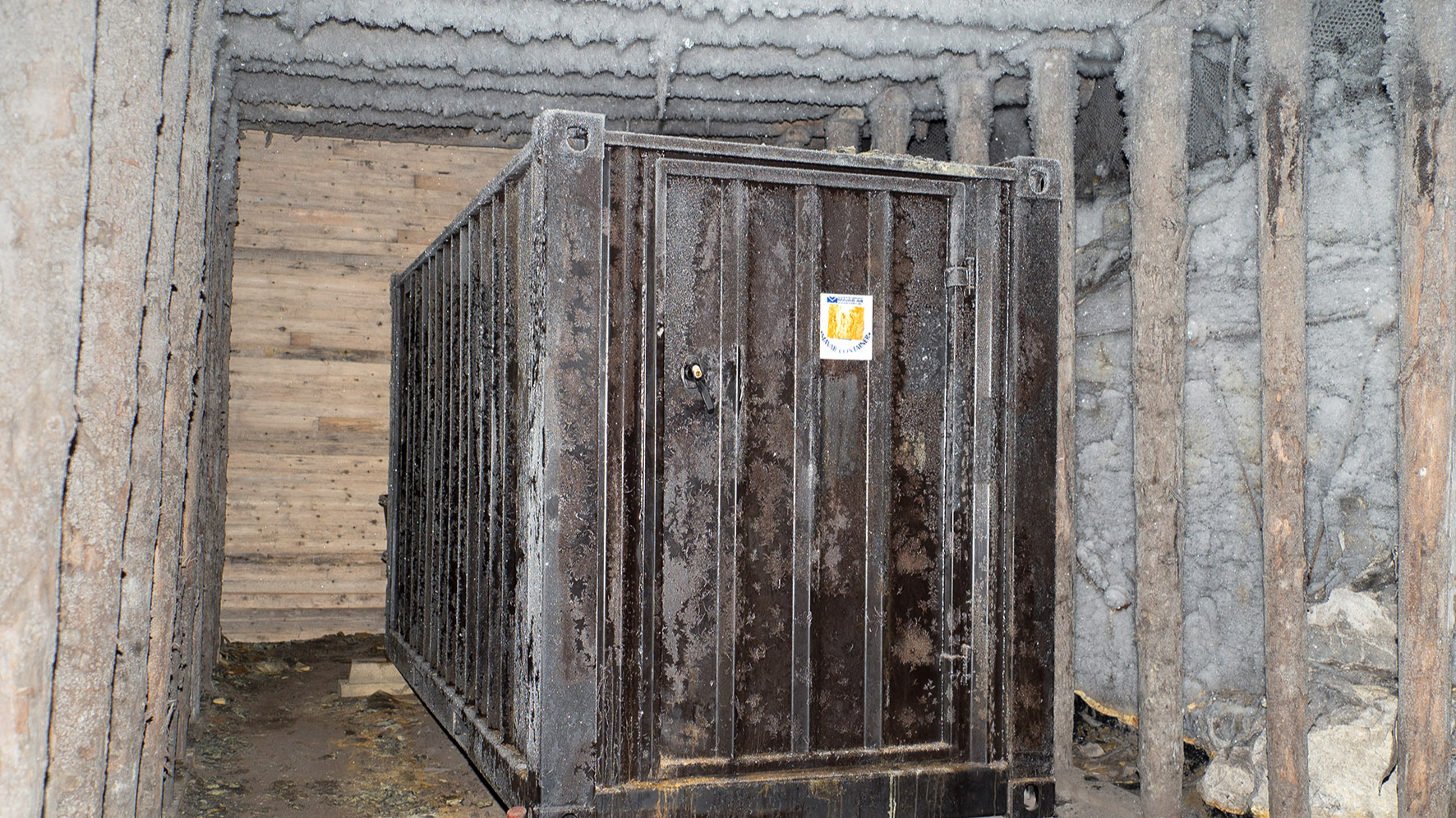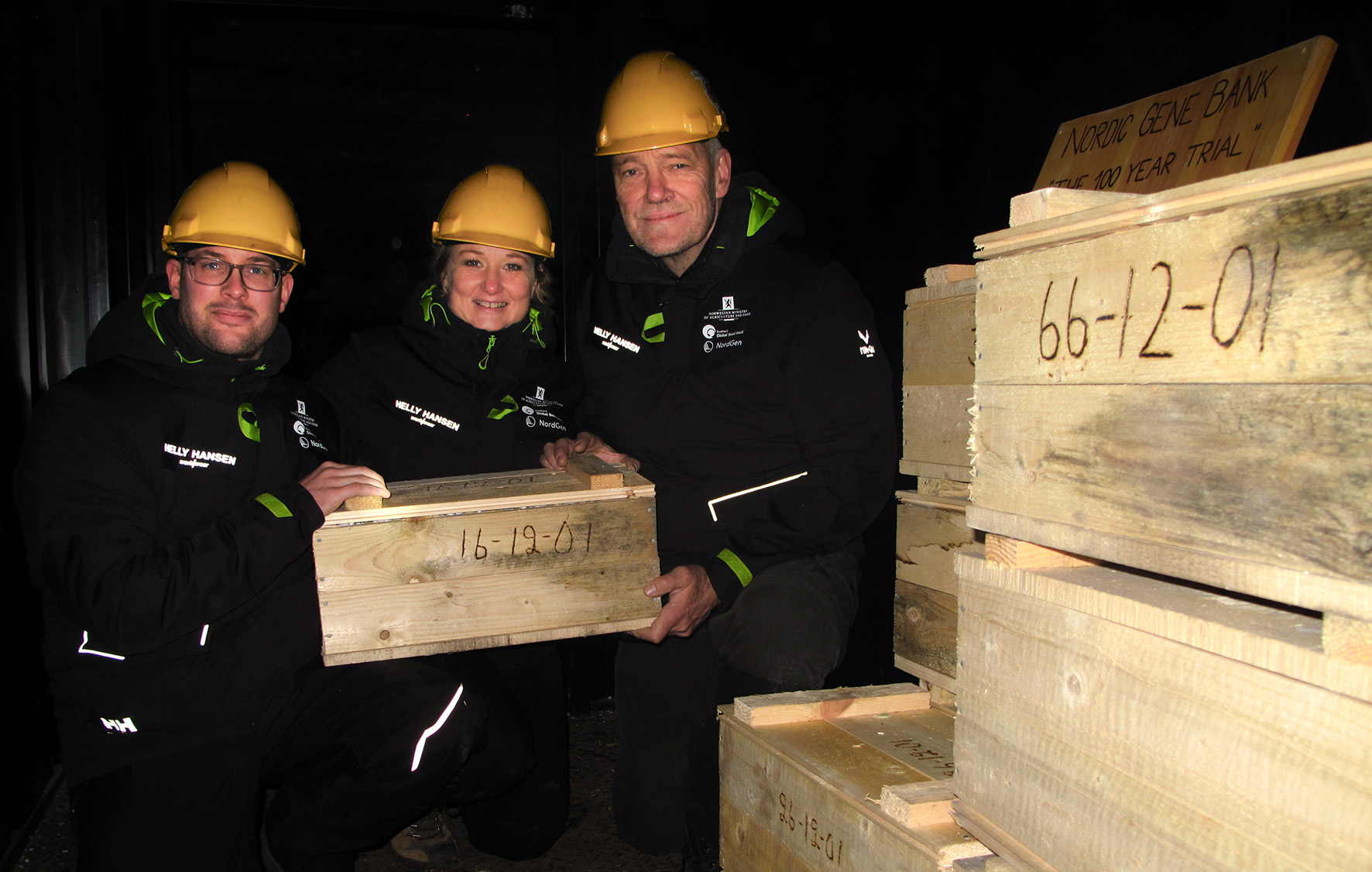
Project Setup
The experimental set up included in total 41 seed lots of 17 agricultural and horticultural crop species commonly grown in the Nordic countries. The study was divided into two series. Series A studies the development of germination capacity in 15 species with two cultivars of each, except for pea which is represented by three cultivars, i.e. altogether 31 seed lots/cultivars (Table 1).
Sample identity | Crop / species | Cultivars (country of origin)1 |
|---|---|---|
A-1-1/A-1-2 | Barley (Hordeum vulgare) | Inga Abed (DNK), Tunga (NOR) |
A-2-1/A-2-2 | Wheat (Triticum aestivum) | Vakka (FIN), Solid (SWE) |
A-3-1/A-3-2 | Rye (Secale cereale) | Petkus II (DNK), Voima (DNK) |
A-4-1/A-4-2 | English ryegrass (Lolium perenne) | Pippin (DNK), Riikka (FIN) |
A-5-1/A-5-2 | Timothy (Phleum pratense) | Tammisto (FIN), Bodin (NOR) |
A-6-1/A-6-2 | Kentucky bluegrass (Poa pratensis) | Hankkijan Kyösti (FIN), Annika (DNK) |
A-7-1/A-7-2 | Red clover (Trifolium pratense) | Jokioinen (FIN), Molstad (NOR) |
A-8-1/A-8-2/A-8-3 | Pea (Pisum sativum) | Weitor (SWE), Hankkijan Hemmo (FIN), Weitor pt. 10468 (SWE) |
A-9-1/A-9-2 | Beet (Beta vulgaris) | 311 N typ (SWE), 70500 (DNK)2 |
A-10-1/A-10-2 | Oilseed rape (Brassica napus) | Jupiter (SWE), Linrama (DNK) |
A-11-1/A-11-2 | Bulb onion (Allium cepa) | Hamund (SWE), Owa (DNK) |
A-12-1/A-12-2 | Lettuce (Lactuca sativa) | Attraktion Sana (DNK), Hilro (SWE) |
A-13-1/A-13-2 | Cucumber (Cucumis sativus) | Langelands gigant (DNK), Rhensk Druv (SWE) |
A-14-1/A-14-2 | Carrot (Daucus carota) | Nantes Fancy (DNK), Regulus (SWE) |
A-15-1/A-15-2 | Cauliflower (Brassica oleracea v. botrytis) | Svavit (SWE), Pari (DNK) |
Table 1. Crop species, cultivars and country of origin of seed materials included in the seed longevity investigations in the 100 years storage experiment in permafrost (Series A). Each crop is represented by two cultivars, three cultivars for pea (Pisum sativum).
1 Country codes according to ISO 3166-1 alpha-3 (Wikipedia 2019).
2 Material from Nordic sugar beet breeding programmes.
Series B considers the survival of 14 common seed borne pathogens found in Nordic Crops, in addition to development of germination capacity, in ten crop species, each represented by one seed lot/cultivar (Table 2). Naturally infected seeds have been used, and in addition, one sample of fungal survival structures (sclerotia) was included in series B.
Sample identity | Pathogen species | Crop / species | Cultivars (country of origin)1 |
|---|---|---|---|
B-1 | Septoria nodorum, Fusarium spp. | Wheat (Triticum aestivum) | Runar (NOR) |
B-2 | Ustilago nuda f.sp. tritici | Wheat (Triticum aestivum) | Line 79 CBW ”A” No 72 (CAN) |
B-3 | Sclerotinia sclerotiorum | Sclerotia from Brassica/Cabbage2 | (NOR) |
B-4 | Drechslera spp. Fusarium spp. | Barley (Hordeum vulgare) | Bamse (NOR) |
B-5 | Drechslera dictyoides | Meadow fescue (Festuca pratensis)3 | Salten (NOR) |
B-6 | Drechslera phlei | Timothy (Phleum pratense) | Forus (NOR) |
B-7 | Lettuce mosaic virus | Lettuce (Lactuca sativa) | Attractie (NLD) |
B-8 | Botrytis allii Fusarium spp. | Bulb onion (Allium cepa) | Laskala (NOR) |
B-9 | Alternaria radicina Alternaria dauci | Carrot (Daucus carota) | Forto Nantes (NLD) |
B-10 | Phoma betae | Beet (Beta vulgaris) | Hilma (GBR) |
B-11 | Alternaria brassicicola | Cabbage (Brassica oleracea ssp. capitata f. alba) | Trønder Lunde (NOR) |
Table 2. Plant pathogens tested for survival in the 100 years storage experiment in permafrost (Series B). The table shows the respective crop species, cultivars and the country of origin of seed materials.
1 Country codes according to ISO 3166-1 alpha-3 (Wikipedia 2019).
2 Sclerotia infecting the genus Brassica were collected from cabbage (Brassica oleracea) and conserved separately in the ampoules, without any seed material.
3 According to current taxonomy, the name is Schedonorus pratensis (Huds.) P.Beauv.
The seed materials for the experiment were dried to 3–5 % moisture content according to seed material storage procedures in the Nordic Gene Bank. Each seed lot was divided into 25 sub-samples, one for each testing date during the 100 years. Each sub-sample consisting of 1,000 seeds were divided and encapsulated in two glass ampoules with 500 seeds in each.
A set of sub-samples from each seed lot was placed in a wooden box (50x25x25 cm) labelled with the date for withdrawal. Altogether, 25 boxes were prepared, transported to Longyearbyen, and placed in the steel container in the abandoned gallery of Cole Mine no 3, where the Nordic Gene Bank already had its safety collection of Nordic seeds.
At the start of the seed deposit project in the coal mine in 1984, the temperature inside was measured to minus 3,7oC, and it was reported to be stable throughout the year. The temperature in the seed storage part of the coal mine has not been measured by NordGen, but as climate change effects are noticeable and significant in Svalbard, it is likely that the temperature has increased over the time span of the project, from minus 3,7oC at the start towards an estimated minus 1-2 oC in 2021. NordGen will, for the rest of the project, monitor the changes in temperatures regularly.
To ensure that the same methods of estimating the germination capacity and the detection of seed borne pathogens are practiced over the whole 100-year period, a complete paper copy description of the experimental layout and procedures is kept along with the stored material in each of the wooden boxes with glass ampoules. Following the same procedures and test methods through the whole experiment is crucial for the reliability and the scientific value of the results.

Icicles visible by the steel container, October 2021.
Every two and a half year during the first 20 years and every five years over the next 80 years, a series of samples (one wooden box) is taken out for analyses. The first series of samples were analysed in December 1986 (year 0 = y0). The last box will be taken out for analyses in December 2086 (y100).
Seeds have been tested according to methods established by the International Seed Testing Association (ISTA 1985, 2017). Test methods are further described in the NordGen report Seed Longevity and Survival of Seed Borne Diseases after 30 years Conservation in Permafrost. Report from the 100 year storage experiment (2019).
Seeds have, for the first 30 years of the experiment, been tested by Kimen Seed Laboratory located at Ås in Norway, applying ISTA protocols published in ISTA (1985) International Seed Testing Association. Rules, 1985. Seed Science and Technology, 13: 299‒355. NIBIO (Norwegian Institute of Bioeconomy Research has assisted in tests detecting virus contamination in lettuce.
From 2021, germination tests belonging to series A have been carried out by the NordGen seed lab in Alnarp, using the same ISTA protocol, while Kimen Seed Laboratory has continued to carry out the tests belonging to Series B.
